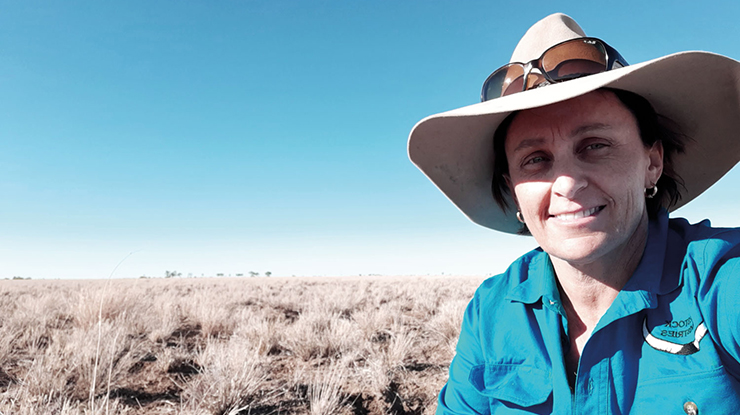 Dr Dionne Walsh, Rangeland Program Manager, NT DPIR
Dr Dionne Walsh, Rangeland Program Manager, NT DPIR
While rebuilding after fire or flood can seem like a daunting task for many producers, it’s also an opportunity to reposition fences and watering points to improve paddock productivity.
Dr Dionne Walsh, who manages the Rangeland Program of the NT Department of Primary Industry and Resources, is leading the MLA‑supported Paddock Power project to unlock the secrets of profitable paddock development.
“After an event such as fire or flood, the immediate need is often to just get fences and waters back up but, where there’s an opportunity to stagger rebuilding efforts, a rethink can contribute to improved grazing and herd productivity,” Dionne said.
She said producers can maximise their investment in wire and water by considering:
- Water location: For example, troughs in the corner of a paddock dramatically concentrate grazing.
- Water spacing: The rule of thumb is 6km between water points in extensive grazing systems and 1-2km in more intensive areas, to improve landscape use.
- Carrying capacity: Repositioning fences and water points is an opportunity to reset stocking rate policies. Dionne recommends seeking independent, evidence‑based advice about the current status of paddocks (taking into account events such as floods which can change land condition) to assess how many cattle they can sustainably support.
Downsize for productivity
“Many paddocks in northern Australia are too big and under‑watered to achieve optimum productivity and pasture utilisation,” Dionne said.
In the Barkly Tableland region, for example, average paddock area is 218km² (21,800ha) and some are more than 1,000km² (100,000ha).
Previous research has shown that developing more water points is a sound investment for achieving better pasture utilisation and increasing carrying capacity.
However, the improvements in breeder herd performance and/or live weight gain that can be achieved from infrastructure development are less clear.
“Producers tell us they need data on potential productivity increases to justify investment in new infrastructure to create smaller, better watered paddocks.
“The Paddock Power project, which includes tracking cattle movements with GPS, is measuring the influence of paddock area and distance to water on breeder herd performance, steer live weight gain, mortality rates, operating costs and feedbase management.”
Dionne said some producers speculate low rates of calf survival could be partly driven by cows leaving newborn calves to return several kilometres back to water, increasing the risk of calf predation or dehydration.
Large, poorly watered paddocks can also have an impact on reproduction and business profitability due to:
- over-and under‑utilised feed
- reduced live weight gain and body condition as cattle walk long distances between water and feed
- reduced re‑conception and calf survival rates from poor breeder body condition
- incomplete musters
- limited opportunities for controlled mating
- difficulty in strategically managing pastures.
“Project findings will refine current recommendations on water point spacing and provide better information on where to place new infrastructure to maximise return on investment,” Dionne said.
Paddock Power will deliver a user‑friendly online calculator so producers can compare the costs of different infrastructure development options and evaluate their profitability based on specific land types, cost base and livestock productivity.






